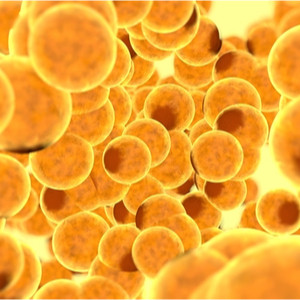
Total manipulation: how fat cells lead us on a tight leash
Even the term "fat" triggers negative associations. Our mind paints us pictures that we don't like at all. Doctors speak of a society that is becoming increasingly fat. They estimate that the proportion of people with a body mass index over 25 is over 50 percent.
What is really true about the "killer" fat? Is it really so dangerous to life and health?
What can you expect in the article?
- the good things about fat
- Body fat as a communication centre
- fat makes you fat
- when insulin and leptin fail to do their job
- Gateway drug and seducer: modern stimulants
- Obesity without overweight
Not all fat is bad
Body fat has the function of an endocrine gland, i.e. it releases vital b-tenants directly into the bloodstream. Additional tasks are:
- ensure the energy supply of the organism
- provide the building material for cell walls
- stabilise the blood sugar level
- protect against external influences (heat and cold)
- tell the body when it is full.
Since fat is a carrier of flavour and aroma substances, our food tastes particularly good when it contains a certain amount of fat.
Our body can only absorb vitamins A, D, E and K through fat, and essential fatty acids are required for vital physiological processes.
Body fat as a communication centre
1984 is not only a famous book title, it is also the year in which the first "adipokine" was discovered. With these adipose tissue hormones, the complex and interactive network of blood vessels, nerve cells, connective tissue, immune and fat cells communicates with the entire organism.
And in this way it influences our activities and our psyche. Makes us healthy or sick and has one oppressive property: fat can grow indefinitely. Researchers now count more than 600 of these signalling molecules. A trend with a rapid increase.
And so there is an organ in our organism that certainly deserves the description superlative. The question that needs to be answered is: how does it interact within our body, how do we react to it?
Only fat makes you fat
Slim people often look a little disdainfully at their "fat" contemporaries. They talk about a lack of willpower, too little exercise and too much couch. Perhaps there is a grain of truth in this, but researchers now know that biology plays a huge role when someone is permanently struggling with their weight.
Because fat, once it has set in, makes you fat. It sets in motion a biochemical control loop that makes people hungry and sluggish. In recent years, some of the newly discovered adipokines have been found to be involved in these processes. Hardly anyone is immune to this manipulative attack by the "fat cells".
When leptin and insulin fail as guardians
One of the signalling molecules is known as "leptin". It inhibits the onset of hunger pangs and regulates fat metabolism. So far so good. But unfortunately, already obese people show a high resistance to leptin, which thus cannot unfold its physiological effect. Then the hormonal stop sign is simply run over.
It is the same with insulin. It is based on similar mechanisms as leptin and triggers a strong feeling of satiety in the brain. In people who eat too much and at short intervals, insulin production is increased. Due to resistance, the craving for food persists until one day the pancreas resigns and stops producing insulin
Gateway drug and seducer: modern stimulants
But why is it that more and more people are becoming overweight and are confronted with the diagnosis of "obesity" at a young age?
If we take a look at the menu of the average family today, we will find plenty of easily digestible sugar-fat combinations on the shelves of the supermarkets. Frozen pizza, soft drinks, ready meals, hamburgers.
These are the real "gateway drugs" to the addiction called obesity. Our addiction centre registers the intake of these calorie bombs with a pleasant shiver because it still "remembers" the times when food had to be hunted down laboriously in the vast steppes, the nearest mammoth was further away than the nearest MacD today - and could only be reached on foot. Calorie-rich delicacies had to be worked hard for back then.
Obese without being overweight
What sounds like a contradiction is actually possible. Fatty tissue can not only be deposited on the hips or thighs. It can also retract inwards, into the free cavities of the internal organs. Visceral fat is the medical term for this. It is well hidden on the sides of the abdomen, between the intestines, on the inside of the back.
Visceral fat has one very unfavourable characteristic in particular: it is more prone to severe inflammation than other fat deposits. The trigger, however, is not viruses or bacteria, as would seem physiologically logical. It is "cell stress" that triggers these reactions. For years, the body is burdened and challenged with the fight against it. This, scientists agree, is the basis for processes of ageing, with the almost inevitable consequences such as hardening of the arteries, arthritis, gout, Alzheimer's, diabetes. What is fatal is that chronic fat inflammation can cause even young adults to age prematurely.
